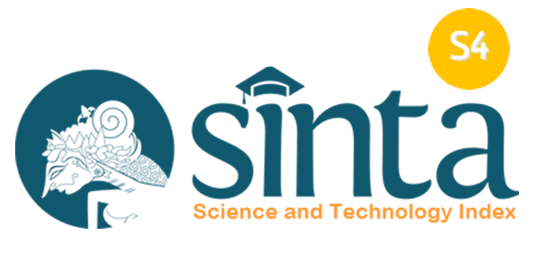The Social Stereotype of Children With Physical Disability
Abstract
Children with physical disability often face stereotypes and stigmatization that affect society's perception of their abilities and potential. The aim of this research is to investigate the stereotypes experienced by children with physically handicapped, find out where the source of these stereotypes comes from, how they impact children, and what efforts have been made to reduce these stereotypes. This article uses a literature review method to explore the dimensions of these stereotypes, including their sources, their impact, and efforts to reduce them. The results show that stereotypes stem from assumptions about physical and intellectual disabilities, which are reflected in the media, personal experiences, and a general lack of understanding. These stereotypes can negatively impact children's psychological, emotional, and social well-being, and limit their participation in social activities. Efforts to reduce stereotypes through community education, family support, and inclusive approaches in schools are needed to create a more inclusive and supportive environment for children with motor disabilities. In conclusion, raising public awareness and ensuring the adaptation of individuals with disabilities in social life are key steps to prevent stigmatization.
Keywords
Full Text:
PDFReferences
Ansari NJ, Dhongade RK, Lad PS, et al. (2016). Study of parental perceptions on health & social needs of children with neuro-developmental disability and it's impact on the family. J Clin Diagn Res. Pages 16-20.
Babik I, Gardner ES. (2021) Factors Affecting the Perception of Disability: A Developmental Perspective. Front Psychol. doi: 10.3389/fpsyg.2021.702166. PMID: 34234730; PMCID: PMC8255380.
Hahn, H. (2014). Disability and stereotypes in literature: A systematic review. Disability & Society, 29(2), 196-208.
Hannah Snyder. (2019). Literature review as a research methodology: An overview and guidelines. Journal of Business Research. Volume 104, Pages 333-339.
Jones, J. M., & Fekete, D. M. (2019). The impact of stigma on parenting children with disabilities: A review of literature. Journal of Pediatric Nursing, 48, e9-e13.
Kail, R. V. (2016). Children and their development (7th ed.). SAGE Publications. Liberati, A., Altman, D. G., Tetzlaff, J., Mulrow, C., Gøtzsche, P. C., Ioannidis, J. P. A., ... Moher,
D. (2009). The PRISMA statement for reporting systematic reviews and metaanalyses of studies that evaluate health care interventions: Explanation and elaboration. Annals of Internal Medicine, 151, W–65.
Tranfield, D., Denyer, D., & Smart, P. (2003). Towards a methodology for developing evidenceinformed management knowledge by means of systematic review. British Journal of Management, 14, 207–222.
Wong, G., Greenhalgh, T., Westhorp, G., Buckingham, J., & Pawson, R. (2013). RAMESES publication standards: Meta-narrative reviews. BMC Medicine, 11, 20.
Xiao, Y., & Watson, M. (2019). Guidance on Conducting a Systematic Literature Review. Journal of Planning Education and Research, 39(1), 93-112.
DOI: https://doi.org/10.17509/jassi.v23i2.67881
Refbacks
- There are currently no refbacks.
Copyright (c) 2024 Universitas Pendidikan Indonesia

This work is licensed under a Creative Commons Attribution-ShareAlike 4.0 International License.




